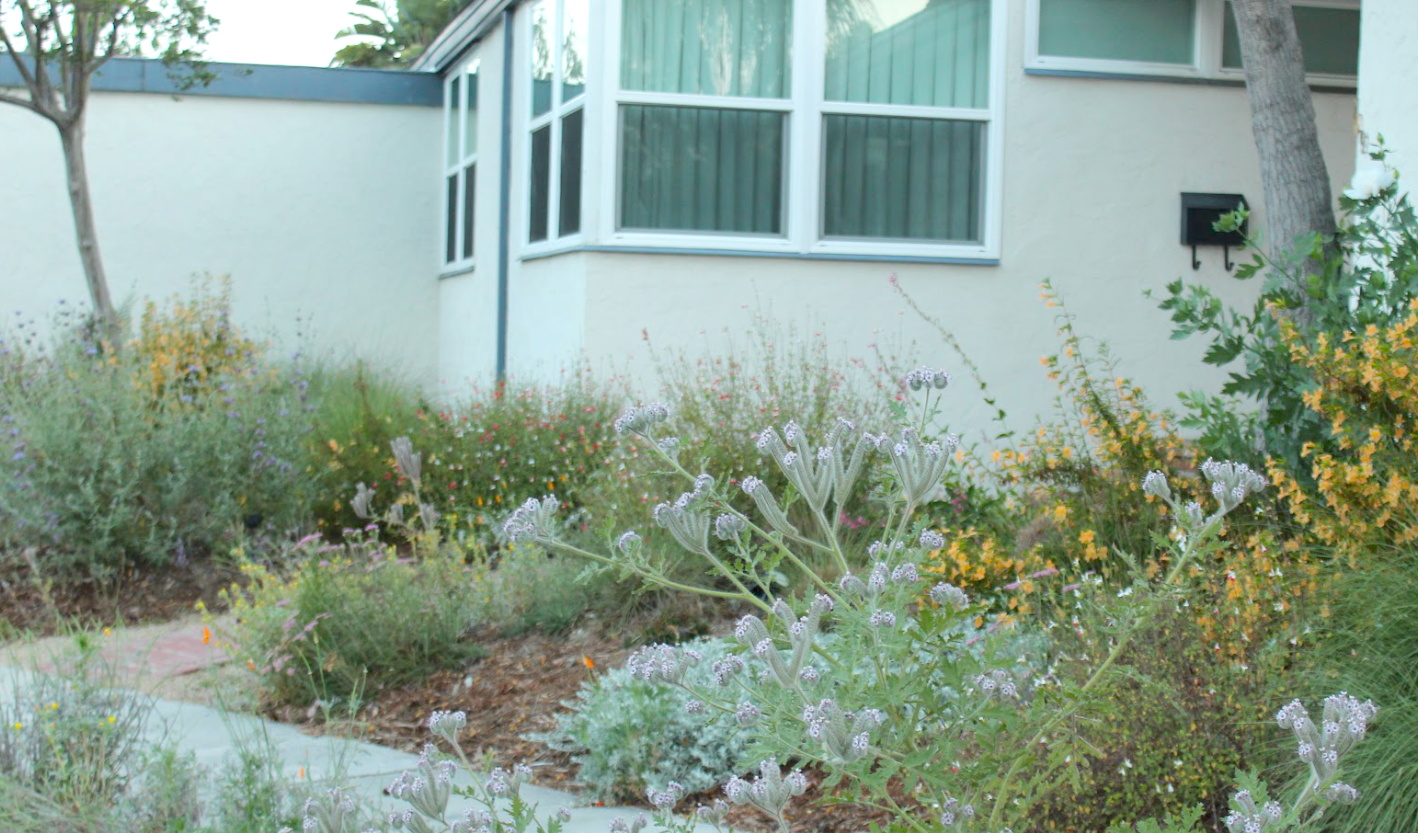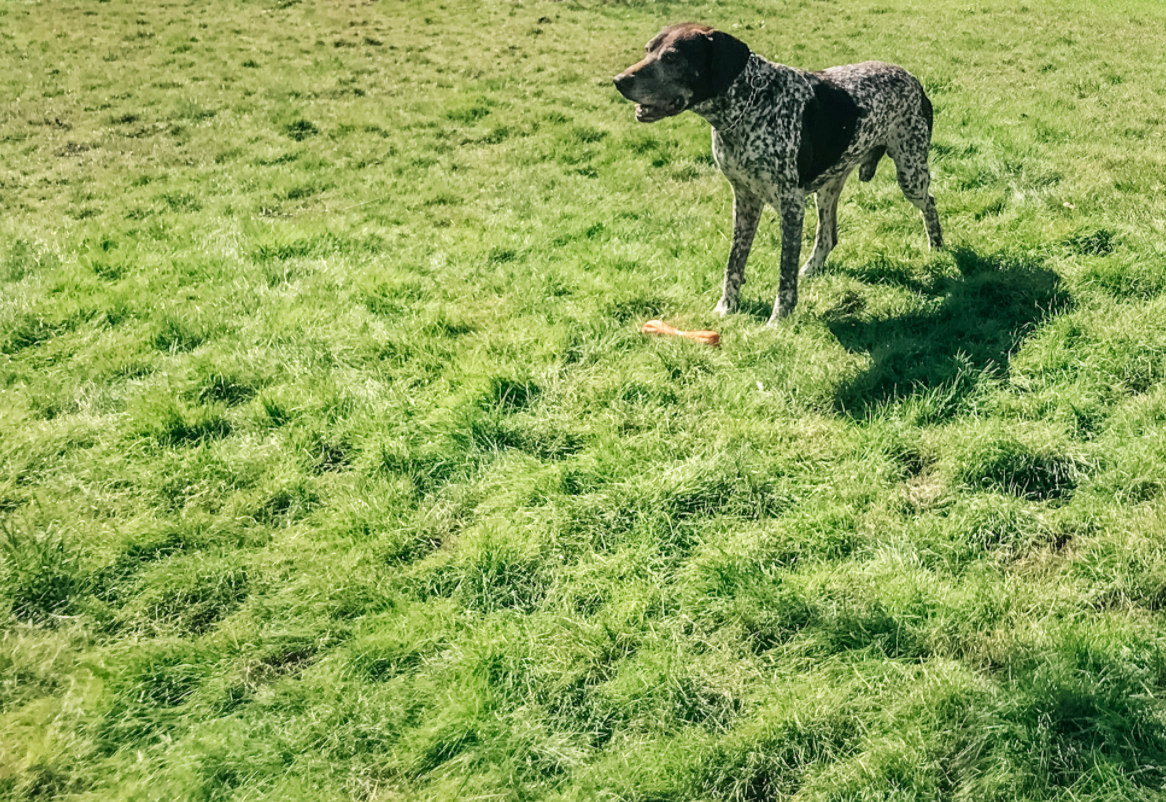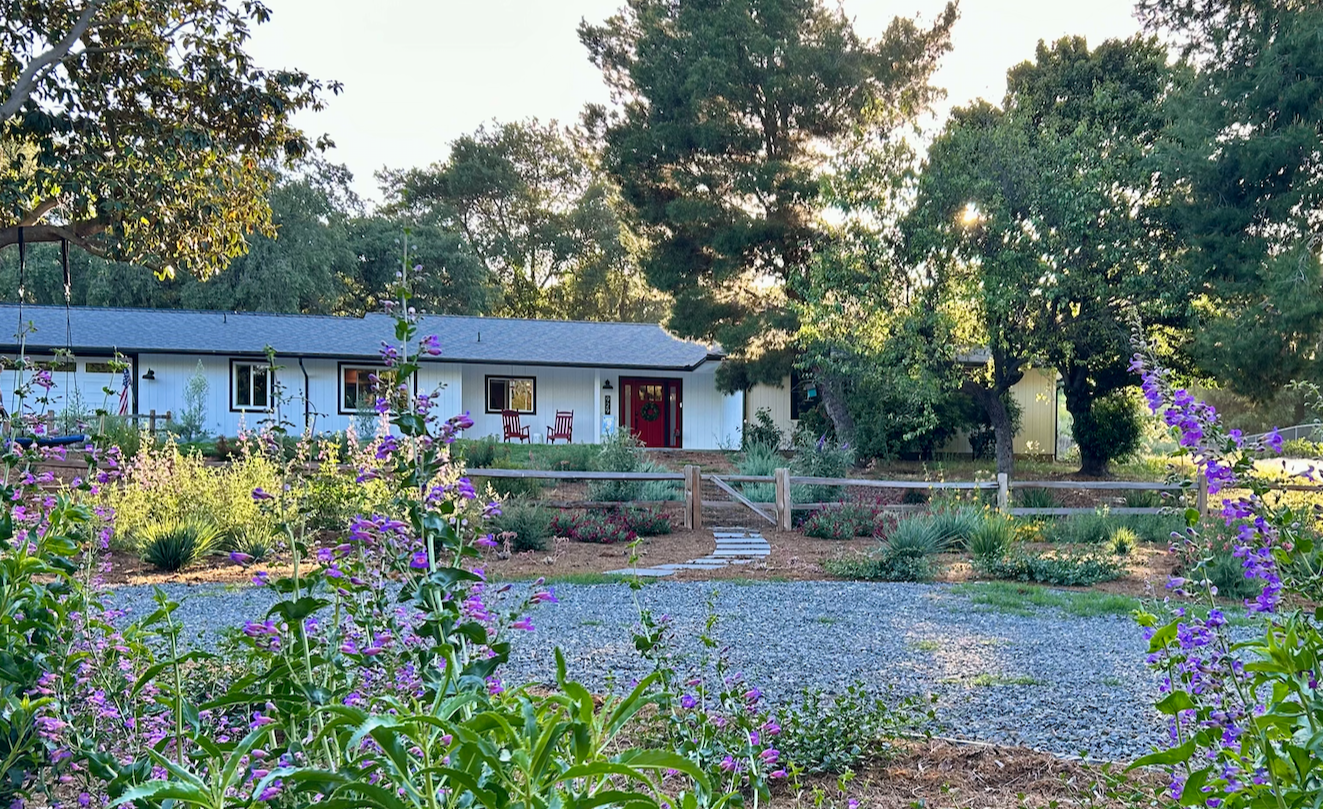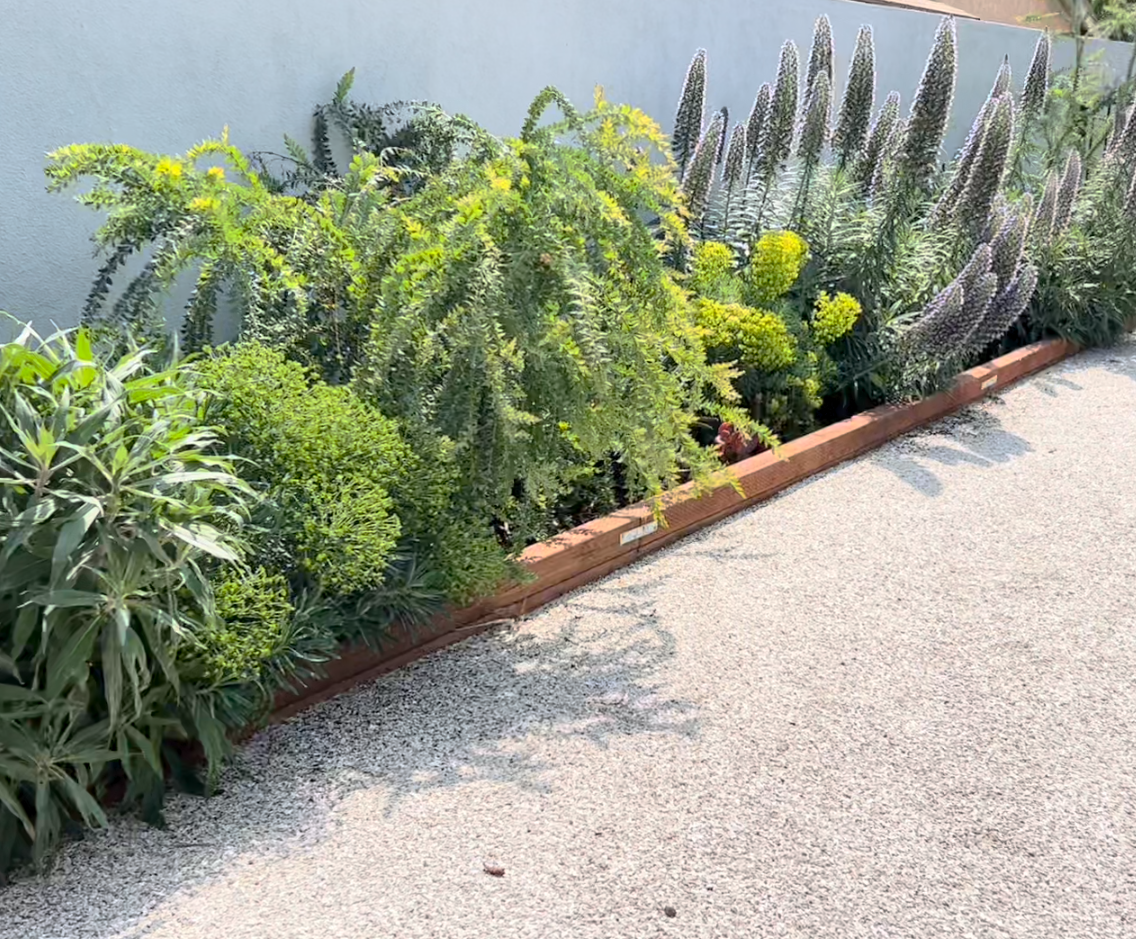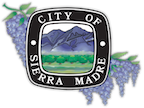
I'll be honest, "easy" might be a bit of a misnomer here. No matter how you prune it, landscaping projects can be a big undertaking and usually require a lot of physical labor to start.
But easy is as easy does. And these lawn alternative choices do big long-term benefits. They are WAY lower maintenance and lower water than traditional lawn after the first year. Plus they're much better for the environment. So long mow 'n blow! We want to keep the gardeners around of course. Just get them on pruners and mulching instead. Read on for the 3 basic material palettes you should consider for lawn alternatives in 2024.
Easy Lawn Alternative 1:
Drought-Tolerant Plants
There's a lot of options when it comes to drought-tolerant plants. More than 20,000 to be exact! The extremities of drought-prone climates have forced a huge array of beautiful adaptations in plants. And we are just starting to get a handle on how to use them to replace lawn in California landscaping.
From silver-leaved beauties to succulent rosettes you can make just about every classic landscape look with drought-tolerant plants. Grouping them with plant community members and soils that are similar to their native wild habitats will yield the greatest success and highest savings. Here are some tried and true drought tolerant plant looks:
Native California Wildflowers
Most of California's wildflowers are adapted to very long periods of drought. And do great with deep, less frequent waterings in summer. Many can die quickly if over-watered in hot seasons. So, great soil drainage and strategic installation timing is essential for their success in home gardens. The easiest cheat is to place 2-3" deep of drainage gravel in the bottom of planting holes. And make sure your finished soil surface is still level or just over plant crowns.
- Improve soil drainage wherever sand & rock isn't abundant in soil
- Space 3-4' apart for full coverage with mid-sized shrubs (takes 1-2 years)
- Water 1-2x week deeply in summer
- Install in fall or winter if possible, when seasonal rains are still possible
- Keep drip omitters at least 6-12" away from plant trunks
Best California Native Wildflower Blends: All the sages! Salvia leucophylla, Salvia Clevelandii, Salvia microphylla (Arizona native), Creeping Germander sage (Salvia chaemadryoides), California Sagebrush (Artemisia californica). Pick your favorite 2-3 sages then add Santa Barbara Daisy (Erigeron karvinskianus) and Monkey flower (Mimulus auranticus) if it's kind of shady or Buckwheat species (Eriogonum), Penstemon and Yarrow if it's sunny. Make it easy and order a premixed blend by clicking here.
Spreading Groundcover
Spreading groundcover is the cheapest lawn replacement option. If you can get a couple of good spreading Ceanothus or Rosemary plants going you can cover an entire frontyard with 10-20 plants. Though not walkable, these plants can cover slopes and spaces you’d like to leave open but not bare. The trick is getting the soil conditions for them right or you'll suffer fungus infections and woody bare foliage.
- Southern California Groundcover Plants: Rock Purslane (Calandrinia), Rosemary 'huntington carpet,' Ceanothus ‘yankee point’ and ‘Bee’s bliss’ Salvia can spread 5-10 feet if adequate soil drainage is provided. Plant on slopes wherever possible.
- Northern California Groundcover Plants: Ceanothus, Bearberry and creeping Manzanita (Arctostaphylos) can quickly cover hillsides. While yerba buena, wild ginger and columbines can fill-in deep shade under large trees.
- Dry Shade: Hummingbird Sage (salvia spatheca) Deer Grass and Catalina Perfume (Ribes viburnifolium) can work wonders. Creeping Raspberry and wild strawberries also happily fill-in on dappled shade slopes.
You can shop bulk online spreading groundcover landscaping plant packages in attractive blends by clicking here.
If you're looking for something to plant around fruit trees, Sterile or Native Frogfruit varieties (Phyla nodiflora & Lippia nodiflora) work wonders under citrus and other fruit trees, a few rooted cuttings here and there on a slope will happily take using only the water from your tree drippers, steadily attract pollinators and spread rapidly in most climates. Some additional irrigation may be required in hottest inland environments.
Cactus, Succulents & Low-Water Mediterranean Plants

Some supplemental irrigation is often a great idea to get low-water plants and succulents off the ground if you're not within a few miles of the coast. Adding versatile drought tolerant mediterranean plants can help to round out the look to be less spiky. Here’s some top-performing industry favorite varieties for that clean, coastal, soft-colored foliage feel.
- Favorite Cactus & Succulents: Desert Spoon (Dasilirion), Thornless Prickly Pear (Opuntia), Blue Agave (Agave Americana), Foxtail Agave (Agave attenuata 'nova'), Aloe Vera,
-
Favorite Mediterranean Plants: Rosemary ‘Boule’, Lavender ‘Goodwin creek’, Lavender cotton - Santolina virens, Catmint Nepeta ‘Walker’s low’, Dwarf olive - ‘little ollie’ or ‘montra,’
Planting in winter just before it rains (in all but hot inland regions of California) will make it so that many of these plants can adapt with minimal irrigation. Space them all at 3-4 feet, with even more room for the 3 biggest succulents, listed first.
Easy Lawn Alternative 2:
Native Grass and Walkable Groundcover
Here's 4 great native grass and groundcover options for replacing your California lawn with something more sustainable...

California Frogfruit Groundcover
- Pet-friendly
-
Stays 1-3” high with no mowing
- Thrives with deep watering every 1-2 weeks in summer once mature (takes a lot of water in the first year to get started).
California Gold - Native Bentgrass
- Dog-friendly native lawn option
- Without mowing grows 12-18" long and takes on a warm soft green look. Biannual string trim required.
- Regular mowing - maintain at 2-4" height for a verdant lawn in cool-seasons and some patchiness in summer
California Silver - Native Fescue
- No-Mow meadow grass grows to 6-12" high
- Thrives in part-shade or full shade in hot inland areas
- Deep green, soft look
- Great for slopes & around oaks
Deer Grass - Large Ornamental Meadow Grass
- Space Deer Grass 5' for big-time coverage in as little as a year
- Cut back to 6" with weed wacker or hard-rake out dead blades in winter
- Alkali Dropseed (Sporobolous airoides)
- Elk Gray Rush (Juncus patens 'elk gray')
- Dune Sedge (Carex pansa)
- Meadow Sedge (Carex praceagalis)
- Gramma Grass (Bouteloua gracilis 'blonde ambition')
Easy Lawn Alternative 3:
Waterwise Hardscaping
Permeable hardscapes help rainwater infiltrate back into the landscape. They are one of the BEST things we can do to make a difference in California's water shortages. The more of them that replace pavement and asphalt the better!
You need open, walkable space for your landscape to be usable. 50/50 is a good balance for a large family or a house with lots of dogs. But much less is needed if you just want a nice seating area or 2 and some paths to wander. It's important to remember that even if you want to put down all permeable hardscape you need to add shade to be climate responsible. Removing lawn - even dead lawn - and replacing it with all exposed sand, concrete or gravel heats up the environment and makes more desert.
Let's all resist desertification by adding hardscaping responsibly! Even one or 2 shade trees to cool surface temps significantly (like at least 10-15 degrees F). Ultimately you want 2/3 - 3/4 of the exposed surface to be at least part shaded.
Best Shade Trees: Try Palo Verde, Shoestring or Fernleaf Acacia or Strawberry tree for 20-30' evergreens. Or 'Shademaster' Locust, Western Sycamore or Jacaranda if you want a seasonal shade canopy and don't mind the litter!

Gravel
Gravel patios and walkways have stood the test of time in European courtyards from Belgium to the Balearic islands. Use sharp-edged gravel for better rainwater infiltration. Anwyere from ⅜ to ¾ is a good diameter. Choose a warm color like ‘California Gold’ for more of a California feel or stick with traditional gray for more euro vibes. Layout gravel courtyards with a central accent like a birdbath, large decorative planter or firepit for a more formal look. Frame the edges with plants that grow 3-5’ to break up open spaces into outdoor dining or lounge areas.

DG - Decomposed Granite
Decomposed granite is a crushed rock dust that can be compacted into smooth flat surfaces. It’s very close in makeup to many California natives soils in canyon washes and foothill slopes. Golden poppies and cactus love to grow right in it (and so do weeds, so make sure it’s lined well!). Perfect for full sun, DG does tend to discolor if it gets wet in shade. It can also scratch wood flooring if tracked indoors so keep some distance between it and your entries.

Permeable Pavers
Precast Concrete Pavers - A favorite modern walkway material. You can find these at most stoneyards ranging in sizes from 12x18” to 3x3.’ If you can’t find them you can always pick up 1x1’ ones at home depot and line them up 2 or 3 tight in a row for the modern look. Space pavers at 3” for groundcovers or sod to grow in between. Mix precast concrete pavers with DG or lawn in the gaps. Or in part shade plant succulent sedums!
Spaced Paver Stones & Permeable Driveways - Many companies today offer paver stones with small spacers at the edges so you can have the refined look of pavers and great rainwater infiltration. Just make sure your masons don’t mortar in the cracks! When it comes to permeable driveways,I have some concerns around the environmental impact of the heavy duty plastic mats used for driveway lawns. Instead try concrete turfstone.

Stepstones & groundcover
Loose Flagstone offers a more informal look. Flagstone is a very affordable and thin material so it’s easy to move. It also comes in a huge range of colors and shapes. You’ll want to lay down sand to ensure the stones sit flat on your ground and don’t crack from walking pressure. There’s a lot of flexibility with piecing together walkways or casual patios with flagstones and stepstones. Again, leave gaps at a minimum of 3” for groundcovers or sod to grow between.

